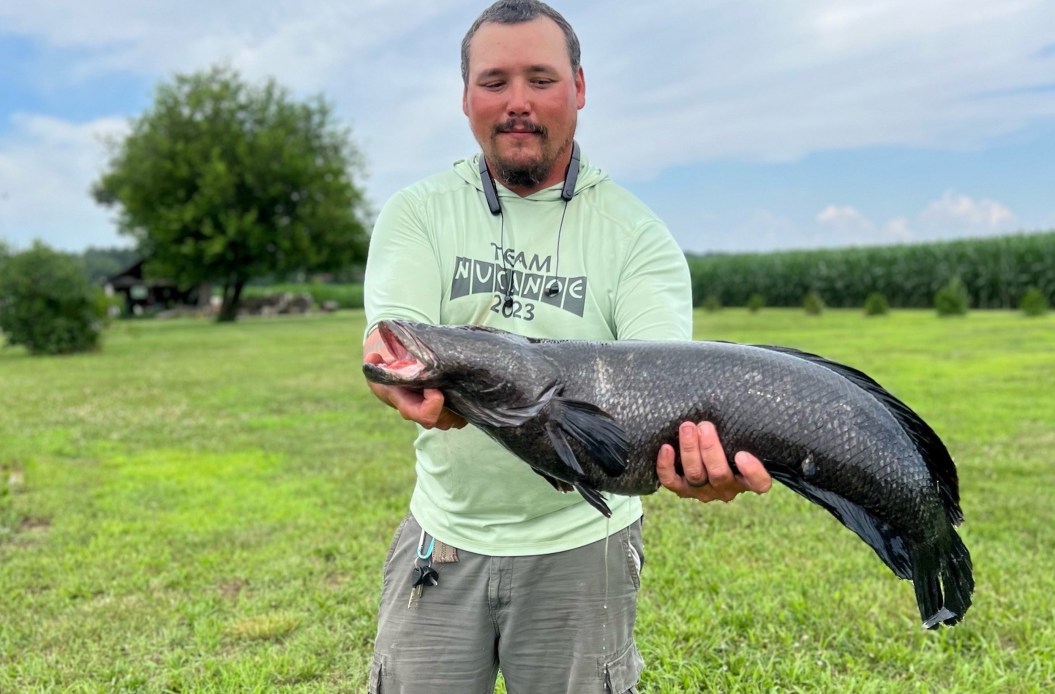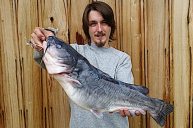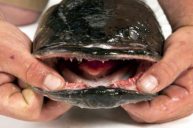The Maryland state record for Northern snakehead has been broken.
Damien Cook, a full-time fishing guide from Rhodesdale, Delaware, was kayak fishing the Dorchester County's tidal river system on July 5 when he reeled in the big one. The new record-holder was using a custom baitcasting rod with 30-pound test-rated braided line, and a custom chatterbait he calls the "cooker."
The 21-pound fish surpassed the previous record-holding 19.9-pound snakehead caught in 2018 by more than a pound in the state's Invasive Division, according to the Maryland Department of Natural Resources. Beyond just breaking Maryland's state record, the snakehead also bests the International Game and Fish Association all-tackle world record by more than 1.5 pounds.
"Honestly I thought it was just your average 30-inch snakehead when I first hooked the fish," Cook said. "It pulled hard but I had the advantage of it being close and I got it in the net pretty quickly."
The large snakehead was weighed on a certified scale provided by Kool Ice Seafood in Cambridge, where it measured more than 36 inches long. It was also confirmed by a Maryland Department of Natural Resources biologist.
https://www.instagram.com/p/CuZX3xLrpQm/
Snakeheads, or Channa argus, have been wreaking havoc in Maryland's Chesapeake Bay tidal waters for decades. The invasive fish preys upon native fish species like perch, bluegill, and catfish. Plus they eat crayfish and frogs and can carry viruses that are fatal to native fish. And they reproduce quickly. A single snakehead may spawn up to five times each year, releasing up to 1,500 eggs each time. Their eggs can hatch within three days.
Snakeheads have become a popular sportfish in Maryland because they fight hard and strike traditional artificial lures that are often used for largemouth bass. The river system where Cook's snakehead was caught is one of the state's hotspots for the fish species.
Northern snakehead are an invasive species not only in Maryland, but across the United States. Anglers are encouraged to kill any snakeheads that they catch or encounter and not return them to the water. The transport of a live snakehead is illegal.




